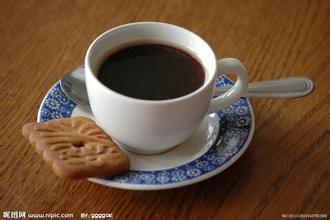Yunnan small Coffee with long aftertaste brief introduction of planting Market Price of Fine Coffee Bean varieties in Huaguoshan

Typica: the oldest native variety in Ethiopia and southeastern Sudan. All Arabikas are derived from Tibika. The flavor is elegant, but the physique is weak, the disease resistance is poor, the fruit yield is less. Excellent manor beans such as the Blue Mountains of Jamaica, Manning of Sumatra and Kona of Hawaii all belong to Tibika. Tiebika top leaf is red copper, called red top coffee, Tibika belongs to Arabica coffee is a short-day plant. Coffee has the characteristics of multiple flowering and concentrated florescence. The florescence of small seed coffee in Yunnan is from February to July, and the flowering period is from March to May. The flowering of coffee is greatly affected by climate, especially rainfall and temperature. Coffee flowers have a short life span of only 2-3 days. Small seed coffee usually opens at 3: 5 in the morning, and it takes a long time for the fruit to bloom from 5 to 7 in the morning. It takes 8 to 10 months for the fruit of small seed coffee to mature, usually from October to December of the year. Rainfall has a great influence on fruit development, and climatic conditions directly affect the fruit, which is Tiebika coffee tree. Tibica is an old variety of Arabica species. It is also known as Kona Hawaii and the Blue Mountains of Jamaica. In the vast expanse of Katim, it is easy to recognize. After careful observation, you will find that each species has its own appearance, Katim's leaves are hanging down, the tree shape seems to be wearing a cloak. On the other hand, Tiebika has upward branches, and the tip of the tree, with new leaves on the copper top, shows that most of the plants in Yunnan are now Katim, which is a hybrid of Kaddura and Robusta, a branch of the bourbon line of Arabica species. The reason for planting this variety is that Katim has the Robusta gene, so it is better than a single old variety in disease resistance, and the yield is better than that of the delicate old variety. Poor disease resistance and low yield, farmers naturally prefer to grow Katim, so now Yunnan has set off a Katim wind.
The growth and development of coffee is closely related to climatic and environmental conditions. In the areas where the wind is strong, the temperature is high, the light is strong, and the soil is easy to dry, the axillary buds of plant branches tend to differentiate into flower buds, and the growth of branches is small, which is easy to cause premature senescence. Therefore, it is necessary to choose a place with quiet wind, high humidity and short light as a garden. Small-grain coffee is a plant that needs water and is afraid of too much water. where the rainfall is less than 1400 mm, you should choose places with irrigation conditions or water conservancy facilities. the root system of coffee is very strong, and the soil drainage is poor, so drains should be added. If the soil has high sand content and poor water conservation and fertility, mulch should be used and organic fertilizer should be applied. The sloping land should be changed into terraced land in order to be suitable for planting. Dig the planting hole 2-3 months before planting, separate the topsoil from the inner soil when digging the ditch, return the topsoil to the ditch, and apply 100 kg of calcium magnesium phosphate fertilizer per mu, where possible, apply 2-5 kg of soil miscellaneous fertilizer as base fertilizer, fill the ditch with topsoil (the topsoil and base fertilizer are evenly mixed) about 15 days before planting, so as to avoid soil subsidence after planting and affect the planting of living small-grain coffee according to different varieties, pruning system, climate and soil conditions. It depends on the agricultural technical measures. The commonly used row spacing is 2 m × 1.2 m (278 plants per mu), 2 m × 1 m (333 plants per mu), 1.8 m × 2 m (185 plants per mu). The specification of 2 m × 1 m is generally adopted in Tanglang Township. Generally, it is planted after the beginning of the rainy season. Tang Lang has a higher temperature, and Rain Water is concentrated in the second half of the year. It is appropriate to plant in July-September and choose cloudy days or moist soil to ensure seedling survival. The selection of strong seedlings requires stable terminal buds, strong plant growth, well-developed roots and no diseases and insect pests. Inferior seedlings, curved roots and malformed seedlings should be eliminated. According to the different conditions and requirements of planting materials at that time, there are four different methods for planting seedlings:
⑴ bare root colonization: when planting, the main root should be straight, the lateral root should be distributed and stretched, and the original natural state should be maintained, layered back to the soil, compacted, so that the root system could not be pressed too tight to avoid root injury, covering and watering after planting.
⑵ soil colonization: when the climate is poor and watering is difficult, the survival rate is high, but the transportation is inconvenient, the gardener is more, and the large area production is less.
⑶ truncated planting: generally used for more than 2 years old, seedling height of more than 1 meter, 25-30 cm from the ground after planting, the survival rate is higher, after survival should be timely pruning.
Cutting materials with straight branches, can not use a branch, because a branch cuttings after the new plant can only grow creeping, can not grow into a straight coffee tree. Cuttings should be cut with green uncorked, fully aged leaves, robust straight terminal buds at the bottom of paragraphs 2-3, not semi-corked and corked straight branches. The leaves of cuttings are four inches wide (about 6-8 cm), and each section of cuttings is 4-6 cm long. The cuttings are cut into two pieces, each with a blade, and the cut is oblique and smooth.
The slotting machine generally uses a sand bed with a thickness of 40-50 cm, with coarse sand in the lower part and medium fine sand in the upper part. The shade degree of the slotting bed should be 80-90%. Wash the sand first when using it, or you can mix it with the coconut bran of 1 stroke 2. Using spray equipment, the rooting rate of cuttings is high, but the cost of equipment purchase is high.
The cuttings can be cut obliquely or directly, and the cutting depth is buried at the leaf node. 10-15 cm in a row, with the leaves not covering each other as the standard. Fully sprinkle with water after insertion to make the cuttings in close contact with the sand. After cutting, plastic film should be covered on the cutting bed to reduce water evaporation and improve the rooting rate of cuttings. When covering the plastic film, it should be arched with iron wire or bamboo, inserted on the edge of the sand bed, and then covered with the plastic film, and then pressed to maintain the humidity in the bed. If you use spray equipment, you don't have to cover plastic film.
Katim, it's hard to say. I have limited ability to express myself. To introduce it in simple words is messy but has a heavy taste. The above all depends on the personal feeling of drinking coffee, I do not sell coffee beans or open a coffee shop, but simply like to drink and think about it by myself, hehe, it does not represent any authority, it is all my own feelings as for quality. I personally suggest that you can try it. Generally speaking, except Tiebika is a little more expensive, Katim can be said to be the price of cabbage. Tiebika medium roast taste individual coffee and then believe that you have your own comments, if you like the blue mountain flavor, I think I should like Yunnan Tibika. The taste is lighter and the aftertaste is long and fruity. But the first sip may disappoint you because there is no strong taste of coffee.
Important Notice :
前街咖啡 FrontStreet Coffee has moved to new addredd:
FrontStreet Coffee Address: 315,Donghua East Road,GuangZhou
Tel:020 38364473
- Prev

Yunnan Arabica Coffee with Moderate Acidity Huaguoshan Fine Coffee Bean Origin and Development History and Culture Introduction
Because of the excellent quality of Yunnan coffee, Lujiang No.1 entered the London market in the 1960s and was rated as a first-class product. In recent years, world-famous coffee companies such as Nestle and Mai's have come to Yunnan to open up raw material bases, and Yunnan's products have gradually gained popularity at home and abroad. At present, the average yield of coffee in Yunnan Province has reached 964 kg, and a family contracted land in Lujiang has reached 40 kg.
- Next

Full-bodied Yunnan small-grain coffee Huaguoshan boutique coffee bean cultivation geographical location climate sea
The planting areas are mainly distributed in Lincang, Baoshan, Simao, Xishuangbanna, Dehong, Nujiang and other states. The average temperature of Lujiangba in Baoshan is 21.5℃, and the highest is 40.4 ℃, which is basically frost-free all the year round. It is recognized as the best producing area of small-grain coffee. The small-grain coffee cultivated here is famous at home and abroad for its strong but not bitter, fragrant but not strong, well-proportioned small noodles, mellow and fruity. In recent years
Related
- Detailed explanation of Jadeite planting Land in Panamanian Jadeite Manor introduction to the grading system of Jadeite competitive bidding, Red bid, Green bid and Rose Summer
- Story of Coffee planting in Brenka region of Costa Rica Stonehenge Manor anaerobic heavy honey treatment of flavor mouth
- What's on the barrel of Blue Mountain Coffee beans?
- Can American coffee also pull flowers? How to use hot American style to pull out a good-looking pattern?
- Can you make a cold extract with coffee beans? What is the right proportion for cold-extracted coffee formula?
- Indonesian PWN Gold Mandrine Coffee Origin Features Flavor How to Chong? Mandolin coffee is American.
- A brief introduction to the flavor characteristics of Brazilian yellow bourbon coffee beans
- What is the effect of different water quality on the flavor of cold-extracted coffee? What kind of water is best for brewing coffee?
- Why do you think of Rose Summer whenever you mention Panamanian coffee?
- Introduction to the characteristics of authentic blue mountain coffee bean producing areas? What is the CIB Coffee Authority in Jamaica?

